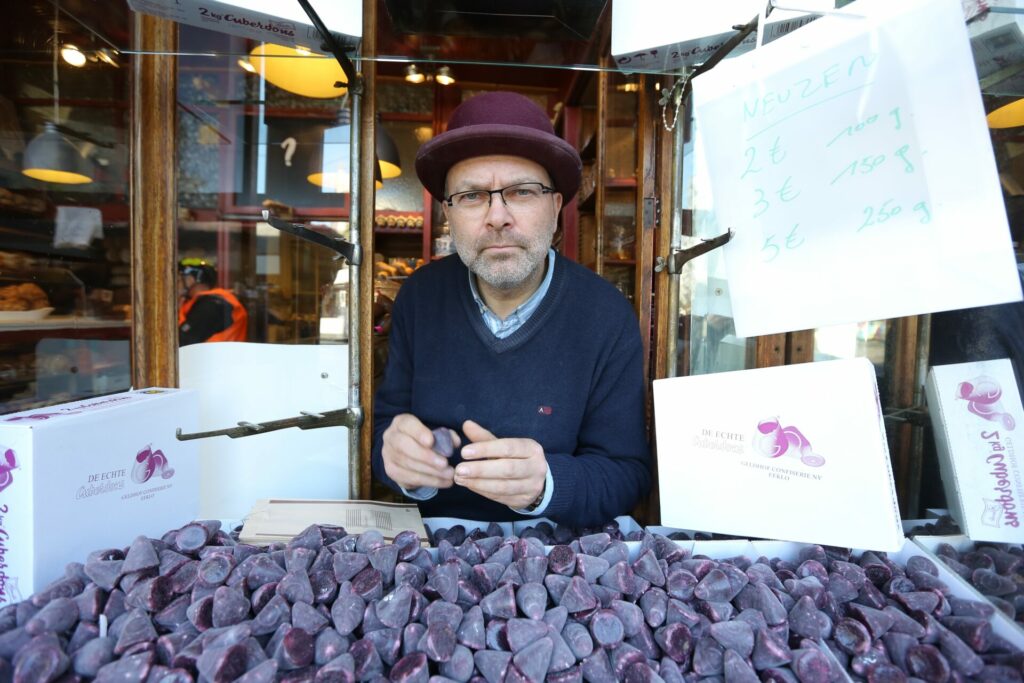It started in 2011 on the pretty Groentenmarkt in Ghent. A trader had set up a wooden cart in the square piled high with the popular local sweets known as neuzekes.
The move annoyed a shopkeeper who sold the sweets in his nearby shop. He retaliated by setting up his own stand, leading to a bitter commercial rivalry that lasted almost a decade, involving insults, fights, court cases, a temporary trading ban and finally, in 2019, a 30-metre exclusion zone.
At the heart of the dispute is a strange conical sweet with a sticky raspberry filling and hard outer shell. It was invented in the late 19th century, possibly by a priest in Bruges, or, more likely, by a Ghent pharmacist called De Vick who accidentally left some cough syrup until it had developed a hard crust.
Let’s admit it, no one knows. Because of their distinctive shape, the sweets became known in Flanders as neuzekes, or little noses. Down south in Wallonia, they are called cuberdons, possibly from the term bonnet de curé – a priest’s hat.
The exact recipe is a closely guarded secret known only to a few producers. The main ingredient is raspberry which gives the filling its dark crimson colour. It also has some sugar, gelatin and gum Arabic collected from the sap of acacia trees in the Sahel region of Africa.
Derek Blyth’s hidden secret of the day: Derek Blyth is the author of the bestselling “The 500 Hidden Secrets of Belgium”. He picks out one of his favourite hidden secrets for The Brussels Times every day.

